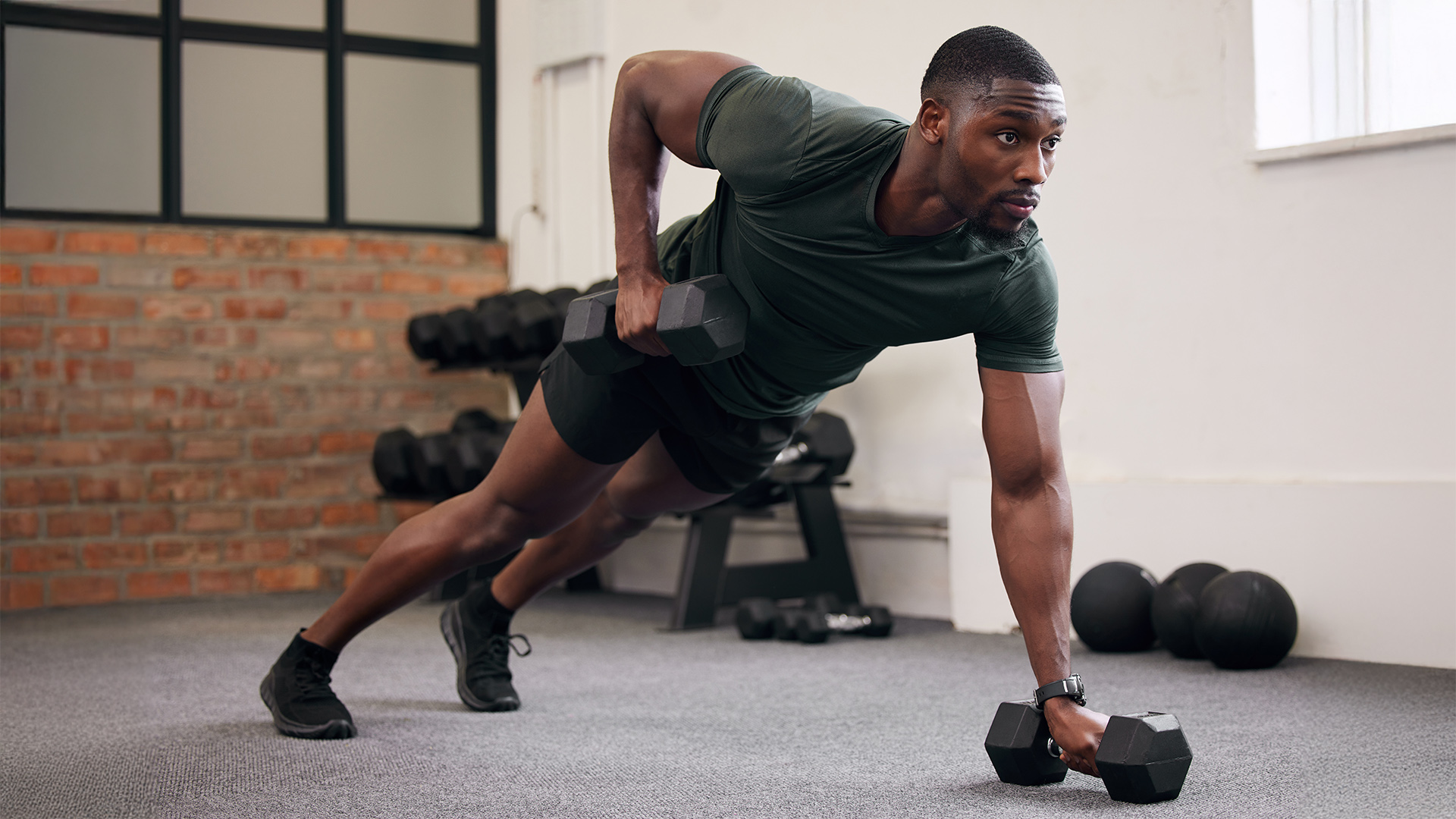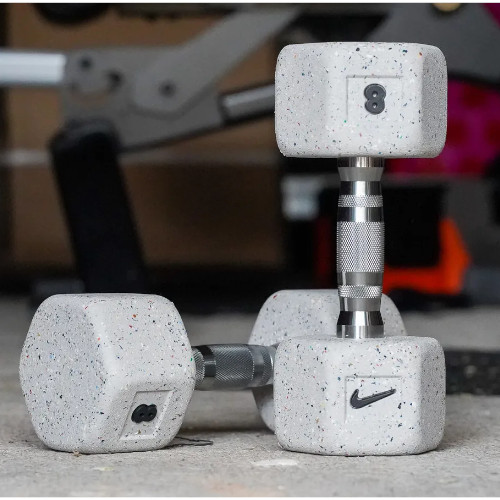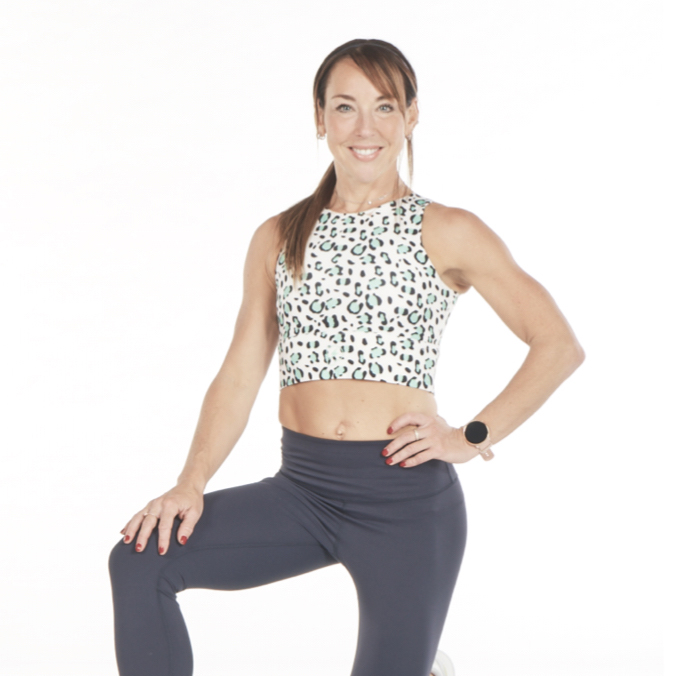You’re wasting time on press-ups – try this underrated move for serious upper-body strength instead
Bored of press-ups? Try renegade rows instead


Press-ups are a go-to for building upper-body strength, hitting the chest, shoulders, and triceps in one efficient move. But they mainly work in a single plane of motion. There is another upper-body move that challenges your muscles more in multiple planes simultaneously.
The renegade row adds an extra layer of challenge by combining push-pull mechanics with serious core engagement. Instead of just lowering and pressing your bodyweight, it demands that you brace your core, stabilise your shoulders, and resist rotation, all while rowing a dumbbell up so your elbow is slightly higher than your torso.
It also brings the lats, rhomboids, rear delts, traps and biceps into the mix, muscles that press-ups often miss. Moreover, the exercise fires up your obliques, glutes, and spinal stabilisers, making it a full-body strength builder.
Done right, it delivers more per rep, strengthening the entire posterior chain while building shoulder control and scapular stability. If your routine is press-heavy and lacking balance, we can safely say it’s time to upgrade your workout with the renegade row.
The benefits of renegade row
The renegade row is a functional powerhouse – everyone’s doing them like it’s a new supermove,” says Michael Baah, a Sportsman and Personal Trainer to Professional Athletes.
“It’s not just a back or core exercise. You’re doing a plank and a row at the same time, so you’re getting double the muscle engagement in half the time.”
That combo gives you more than just visible strength. “You’re training the body to move as one coordinated unit, integrating posture, trunk control and shoulder stability with every rep.”
Get all the latest news, reviews, deals and buying guides on gorgeous tech, home and active products from the T3 experts
Renegade rows also improve core strength and spinal alignment, thanks to the anti-rotation component. “Because you're working unilaterally and resisting twist, it forces your spine to stay aligned,” says Michael.
“That builds trunk control, improves scapular rhythm and challenges the deep muscles that protect your lower back. It’s one of the best exercises for real-world core function.”
How to do the renegade row
Start kneeling with two dumbbells or kettlebells on the floor, shoulder-width apart.
Grip the handles with your palms facing each other and step back into a high plank. Your wrists, elbows and shoulders should be stacked, with your body in a straight line from head to heels. Brace your core and glutes to lock your hips in place.
Press down through your left arm as you row the right dumbbell towards your ribs, keeping the elbow close to your side. Pause when your upper arm is just above torso level. Lower the dumbbell with control, replant it under your shoulder, then repeat on the left side.
Common renegade row mistakes to avoid
Even seasoned lifters can mess up the renegade row. Here are the biggest technique pitfalls to watch for:
Letting the hips rotate
"If your body twists when you row, you’ve lost the purpose of the move,” explains Michael.“This is about resisting movement, not exaggerating it.”
Rowing too high
”Row until your elbow is in line with your torso,” says Michael. “Stop at the ribcage. Anything higher disengages the scapula and puts strain on the shoulder joint.”
Using weights that are too heavy
“If you're yanking or jerking the dumbbell, it's too heavy. Drop the load and focus on clean, controlled reps,” explains Michael.
Feet too narrow
”A narrow base kills your stability,” adds Michael. “Unless you're a pro, keep your feet shoulder-width apart (or wider). This gives you a stable platform to resist rotation. Narrow feet increase the challenge, but only attempt that once your form is rock solid and you’ve earned the right to progress it.
Using round dumbbells
”Round dumbbells roll, so they can throw you off balance, and mess with wrist alignment. Always use hex dumbbells [editor's note: see also our Nike Grind Dumbbells review] for safety and control,” says Michael.
How to incorporate renegade rows into your workout
Michael recommends starting with 3 to 4 sets of 8 to 10 reps per side and resting 60 to 90 seconds between sets.
- You’ll also want to slow it down with a controlled tempo:
- 1 second to pull
- 2 seconds hold at the top
- 2 seconds to lower
“The pause at the top matters. That’s where you build control,” says Michael. “If you can’t hold without twisting your hips, the weight’s too heavy. Drop it and earn your reps.”

Nike's Grind Dumbbells are crafted with at least 20% recycled Nike Grind rubber, making them resilient and floor‑friendly. Featuring medium‑knurled chrome handles for secure grip, they are hex‑shaped to prevent rolling and combine eco‑friendly style with home‑gym durability. Premium feel meets recycled innovation.
Verdict
The renegade row is a functional powerhouse, but don’t mistake it for a pure muscle builder.
“If your goal is to build serious back or arm mass, this won’t be your main lift,” explains Michael. “You’re not moving enough load, the range is too short, and the instability limits tension.”
That said, the renegade row is a Swiss Army knife of an upper-body move. Use it well, and it will sharpen your posture, strengthen your trunk, and build core stability that transfers to everything else you do inside the gym - and out.

Lucy Miller is a journalist, Level 3 Personal Trainer, Nutritional Advisor and Children’s Fitness Specialist. She holds fitness qualifications from NASM Training and Premier Training International and has been a fitness journalist and fitness (and cover) model for over 20 years. Since going freelance in 2014, Lucy left Men’s Fitness Magazine to write for an abundance of top consumer titles such as Women’s Health, Women’s Fitness, Waitrose, The Times, The Guardian and Runners World.
She’s also extremely passionate when it comes to educating others about health and physical activity and loves inspiring and working with children and adults to help make fitness fun, sustainable and accessible. In her spare time, Lucy is ever the sportswoman. Once a national gymnast, having won three national titles, she has also run a handful of marathons around the world and loves to test her physical and mental side with daily running and gym sessions, not to mention ballet, bootcamp, boxing and TRX.
You must confirm your public display name before commenting
Please logout and then login again, you will then be prompted to enter your display name.
